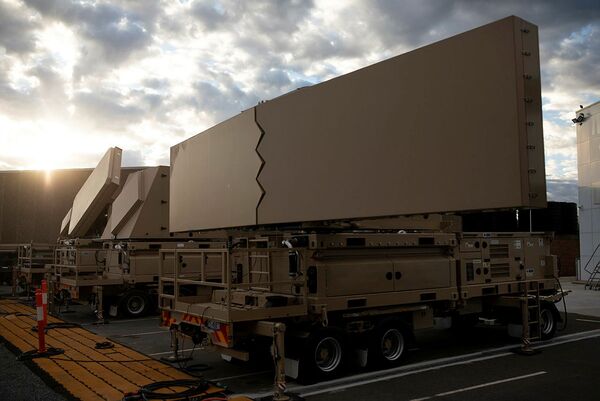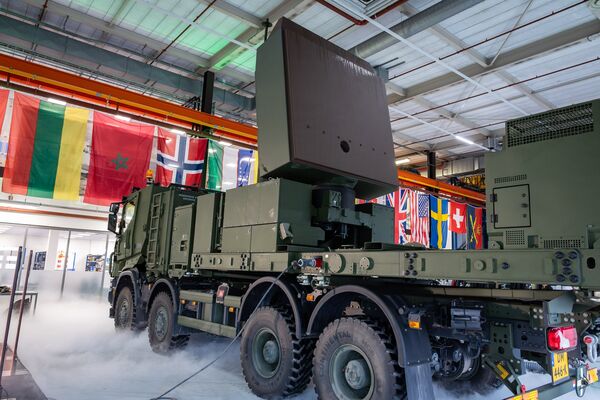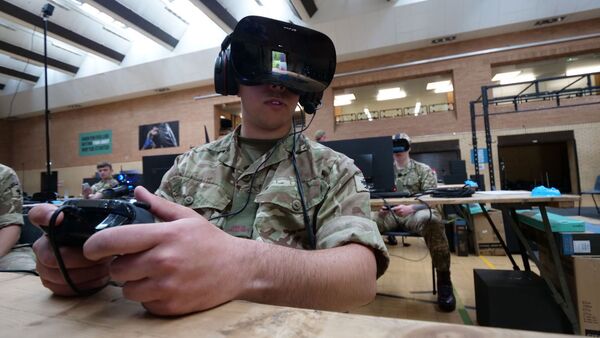- About
- Intara
- Capabilities
- Advisory
- Resources
- News
- Store
Update: CEA Technologies to build air-defence radars for ADF
27 July 2022
by Oishee Majumdar


CEA Technologies is building four new air-defence radars (pictured above) for the ADF. (Commonwealth of Australia)
Canberra-based CEA Technologies has secured a “multimillion-dollar” contract from the Australian Department of Defence (DoD) to build four new air-defence radars, Australia's Minister for Defence Industry Pat Conroy announced on 21 July.
“The new sensors will be able to detect aircraft and missile threats at greater ranges and with increased accuracy than our current systems, allowing for real-time critical information to be received and affording greater warning, decision, and response time,” Conroy said.
The new radars use active electronically scanned array (AESA) technology and will replace “four in-service radars” of the Australian Defence Force (ADF), a spokesperson for the DoD told Janes on 27 July.
The new sensors “are designed to operate against the latest generation of airborne targets”, the spokesperson said.
They “are able to perform three-dimensional volume search, surface search, fire-control support, and target classification in demanding, cluttered and jamming environments”, the spokesperson added.
The spokesperson told Janes that “the sensors are currently scheduled for delivery” in 2024.
Thales to supply Netherlands with seven additional radars
16 April 2024
by Olivia Savage


The Netherlands has ordered seven additional GM200 MM/C radars from Thales after having ordered an initial nine in February 2019. Pictured is the first GM200 MM/C radar being handed over to the Royal Netherlands Army in Hengelo in February 2024. (Dutch MoD/Sgt Maj Gregory Fréni)
The Dutch Command Materiel and IT (COMMIT) procurement authority has ordered seven additional Ground Master 200 Multi-Mission/Compact (GM200 MM/C) radars from Thales.
The contract includes an option for two additional radars, according to a Thales announcement on 15 April.
The GM200 MM/C is a compact mobile radar that can detect, track, and classify a large number of targets including rockets, artillery shells, mortar rounds, unmanned aerial vehicles (UAVs), aircraft, helicopters, and cruise missiles.
For the Royal Netherlands Army (RNLA), the radars will be mounted on Scania Gryphus 8×8 trucks to enable rapid deployment.
A Thales spokesperson was unable to comment to Janes on the delivery timeframes.
This latest contract follows an initial agreement in February 2019 for nine GM200 MM/C radars for EUR100–250 million (USD106–266 million) to replace its legacy TPQ-36 radars. Deliveries are expected to be completed by 2024. In February Janes
IT²EC 2024: Latest version of BISim's VBS4 to feature munition-equipped UAVs
11 April 2024
by Olivia Savage


VBS4 24.1, the latest version of BISim's VBS4 virtual simulation software pictured being used by MoD personnel with commercial-off-the-shelf hardware, is due to be released in May. (Bohemia Interactive Simulations )
The latest version of Bohemia Interactive Simulations' (BISim's) Virtual Battlespace 4 (VBS4) environment will feature munition-equipped unmanned aerial vehicles (UAVs), the company announced at the International Training Technology Exhibition & Conference (IT2EC) 2024 held from 9 to 11 April in London.
VBS4 is a virtual desktop training environment with whole-earth rendering for tactical training, experimentation, and mission rehearsal.
The latest version – VBS4 24.1 – is due to be released by the end of May and will integrate all major gun-tank variants of the T-72 main battle tank and will include a new feature that allows any UAV to drop improvised munitions or have impact-detonating munitions, the company detailed.
Control AI will now also be default in VBS4 24.1, which the company says is a “big step towards removing all legacy ‘game' AI from the product”.
IT²EC 2024: Babcock unveils new immersive training system
11 April 2024
by Olivia Savage


The Babcock Immersive Training Experience (BITE), unveiled at IT²EC 2024, was configured to imitate a bunker control room, equipped with communication devices and video feeds, including from UAVs and social media. (Janes/Olivia Savage)
Babcock unveiled a new modular, immersive training system at the International Training Technology Exhibition & Conference (IT²EC) 2024 held from 9 to 11 April in London.
Known as the Babcock Immersive Training Experience (BITE), the system is designed to provide trainees with a realistic training environment in a modular, transportable 20-foot container, Matthew Chuter, the Babcock campaign director for the Collective Training Transformation Programme (CTTP), told Janes and other media representatives at the exhibition.
The system, co-developed by Babcock and BeaverFit, is equipped with audio, visual, and physical effects that can be increased in intensity and adjusted to suit a range of scenarios, placing the trainees in a realistic battlefield environment. The effects and the trainees actions, including their biometric data, are all controlled and monitored in an external control room. Additional containers or different configurations can also be provided depending on the customer's needs.
Canberra-based CEA Technologies has secured a “multimillion-dollar” contract from the Australian Dep...
Latest Podcasts
Iran Israel analysis
In this podcast Janes analysts discuss the Iranian attacks on Israel on the 14 April. They highlight the military systems used by Iran and the performance and impact of these on Israel. They also discuss the implications of this attack goi...
Listen nowJanes Case Studies
Using Janes Intara to build a common intelligence picture: Russian build up on the Ukrainian border
View Case StudyNews Categories
 C4ISR Details
C4ISR Details